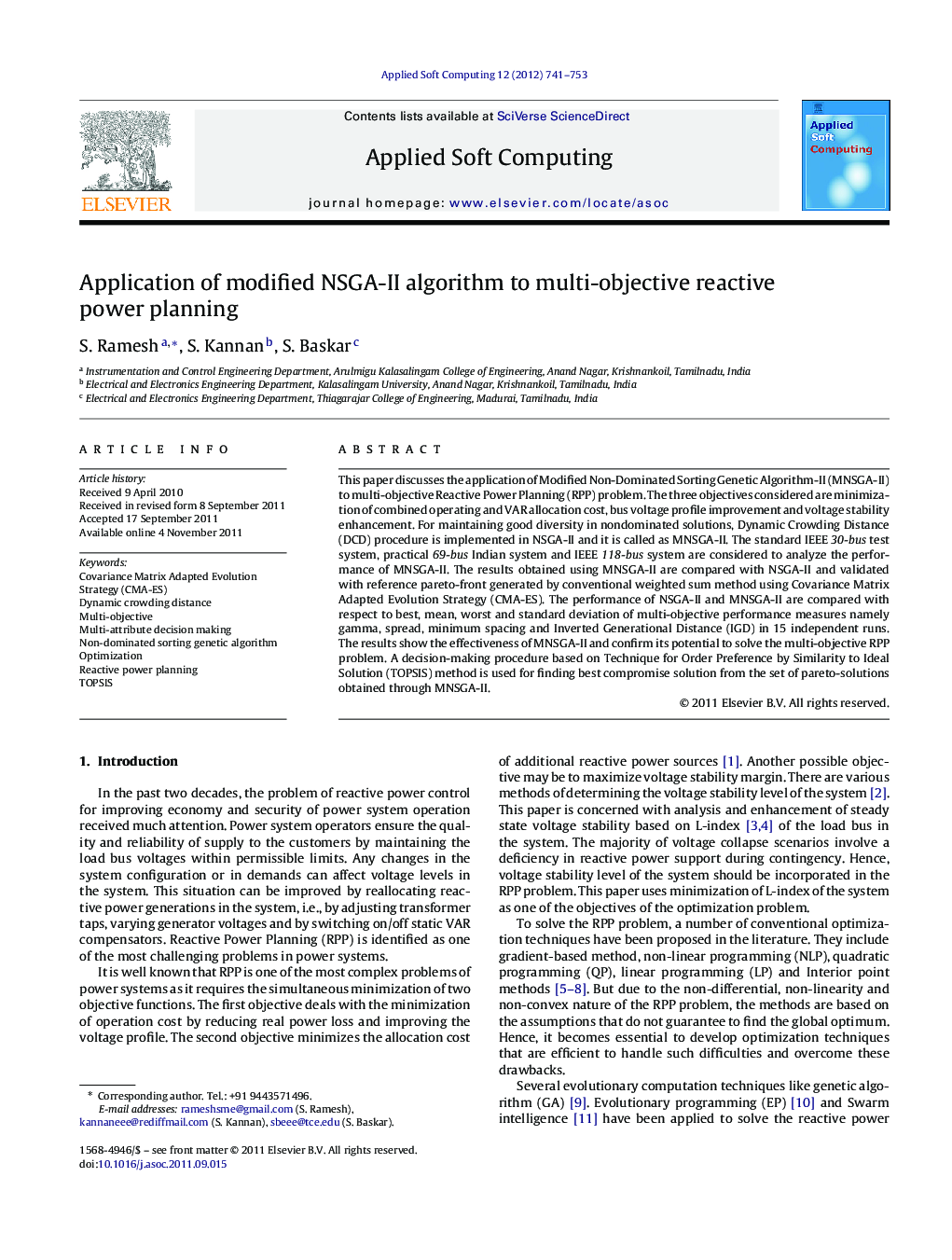| کد مقاله | کد نشریه | سال انتشار | مقاله انگلیسی | نسخه تمام متن |
|---|---|---|---|---|
| 495897 | 862844 | 2012 | 13 صفحه PDF | دانلود رایگان |

This paper discusses the application of Modified Non-Dominated Sorting Genetic Algorithm-II (MNSGA-II) to multi-objective Reactive Power Planning (RPP) problem. The three objectives considered are minimization of combined operating and VAR allocation cost, bus voltage profile improvement and voltage stability enhancement. For maintaining good diversity in nondominated solutions, Dynamic Crowding Distance (DCD) procedure is implemented in NSGA-II and it is called as MNSGA-II. The standard IEEE 30-bus test system, practical 69-bus Indian system and IEEE 118-bus system are considered to analyze the performance of MNSGA-II. The results obtained using MNSGA-II are compared with NSGA-II and validated with reference pareto-front generated by conventional weighted sum method using Covariance Matrix Adapted Evolution Strategy (CMA-ES). The performance of NSGA-II and MNSGA-II are compared with respect to best, mean, worst and standard deviation of multi-objective performance measures namely gamma, spread, minimum spacing and Inverted Generational Distance (IGD) in 15 independent runs. The results show the effectiveness of MNSGA-II and confirm its potential to solve the multi-objective RPP problem. A decision-making procedure based on Technique for Order Preference by Similarity to Ideal Solution (TOPSIS) method is used for finding best compromise solution from the set of pareto-solutions obtained through MNSGA-II.
Figure optionsDownload as PowerPoint slideHighlights
► In this paper, Modified Non-dominated Sorting Genetic Algorithm-II (MNSGA-II) is applied to multiobjective reactive power planning problem by incorporating the concept of Dynamic Crowding Distance (DCD) in NSGA-II algorithm.
► Three conflicting objectives such as combined operating and VAR allocation cost minimization, bus voltage profile improvement and voltage stability enhancement are considered.
► The IEEE 30-bus system, practical 69-bus Indian system and IEEE 118-bus system with base case and network contingency case are considered as test systems.
► By using conventional weighted sum method with Covariance Matrix Adapted Evolution Strategy (CMA-ES), a reference pareto-front is generated to compare the pareto-front generated in MNSGA-II.
► The statistical multi-objective performance measures such as gamma, spread, minimum spacing and Inverted Generational Distance are considered for validating the improved performance of MNSGA-II.
► From the simulation results, it is observed that MNSGA-II performs better in most of the performance measures when compared to NSGA-II.
► A decision-making procedure based on Technique for Order Preference by Similarity to Ideal Solution (TOPSIS) method is used for finding best compromise solution from the set of pareto-solutions obtained through MNSGAII.
Journal: Applied Soft Computing - Volume 12, Issue 2, February 2012, Pages 741–753